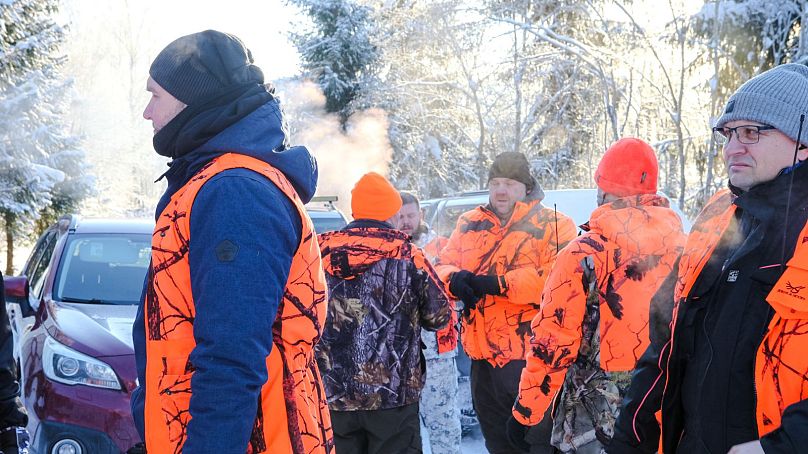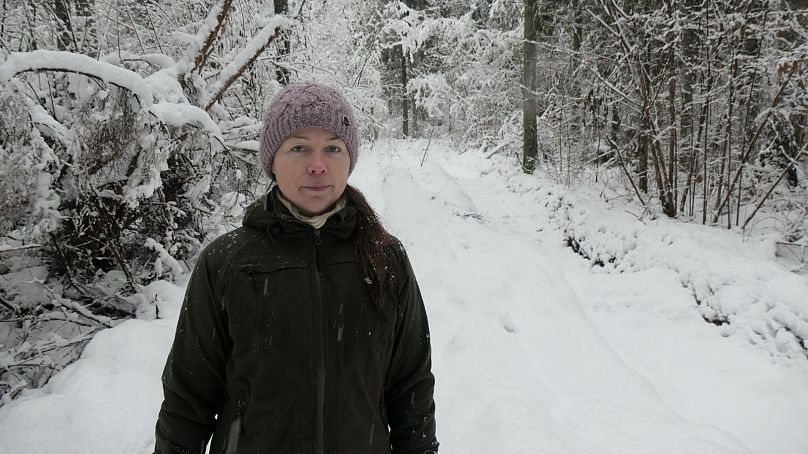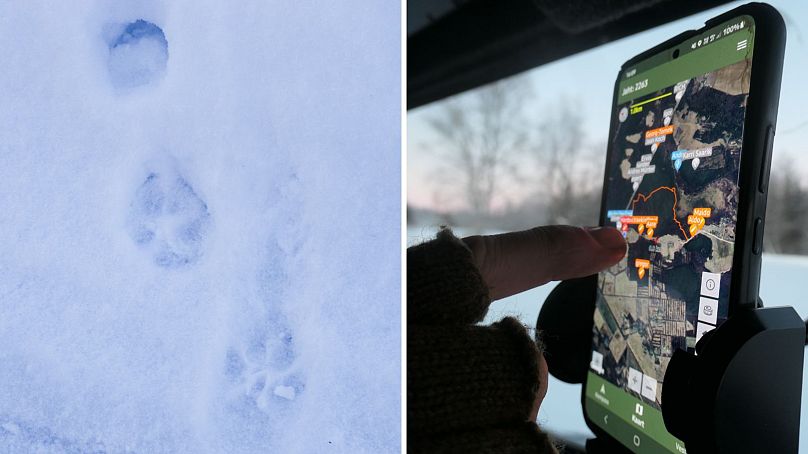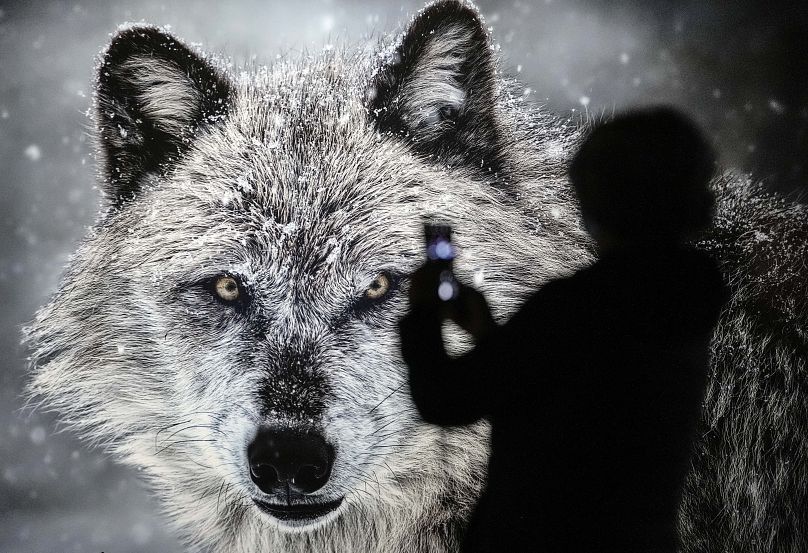Hunters killed up to 40% of Estonia’s wolves this winter, a quota challenged in court. How far will Europeans tolerate the wolf in our landscapes?
Frost shimmers in the crown of a birch tree as dozens of men crawl out of cars, vans and jeeps. They hang guns on their backs and trudge through the snow, their breath whirling in the freezing air.
In scattered formation, the hunters surround a forest near Suursoo, 25 kilometres from Estonia’s capital Tallinn. It’s January, 20 degrees below zero - perfect weather for a wolf hunt.
A tracker stalks paw prints deep into the forest and the others follow his movements through an app. Suddenly, the radio crackles. “Get ready!” But amidst a flurry of shots, the wolves escape.
They will live to see another day. But many others face a different fate, as Estonian hunters cull up to almost half the country’s wolf population every year.
The government argues that the hunt is necessary to soften the societal impact of having wolves, and limit economic losses for farmers.
A round-table between officials, scientists and stakeholders draws up a management plan every decade. In 2021, it set the desired population between 200 and 300 wolves.
After monitoring the population, Estonia’s Environmental Board (Keskkonnaamet) decides each year how many wolves hunters can shoot. In the winter of 2023/2024, with an estimated population around 360 wolves, the quota stood at 144.
Regional hunting clubs each get a proportion of that number, with the hunting season lasting from the beginning of November until the end of February.
Wolf defenders are challenging the quota in court
Not everyone agrees. Local NGO Big Predators in Estonia (Eesti suurkiskjad) has challenged the legality of the quota in several court cases, leading all the way up to the Estonian Supreme Court.
The NGO’s head, Eleri Lopp, claims the animal’s status is less favourable than suggested by the Environment Agency (Keskkonnaagentuur) - the government institution tasked with monitoring wolf populations.
Lopp bases this on two key arguments. First, she calls the monitoring unreliable because it relies mainly on hunter observations. Maris Hindrikson, wolf researcher at the University of Tartu, calls it unscientific too. “You cannot effectively validate that info from hunters,” says Hindrikson, who calls for genetic monitoring.
By collecting DNA, from droppings or tufts of fur for example, “we can identify each individual, mapping kinship and population structure,” Hindrikson says. “That takes effort and money, but provides more reliable data.
“Now we effectively monitor only the population that has already disappeared, the animals that have been shot.”
Secondly, Estonia considers wolves on its territory in a broader context - that of a Baltic population that extends to northern Poland and across the border with Russia. Lopp believes the country is failing in its duty to work towards a healthy population within its borders.
She says there is not enough evidence that there’s a healthy exchange between wolf populations in different countries in the region.
As the Estonian Supreme Court grappled with these complex issues, it referred the case to the Court of Justice of the EU for further clarification in late 2023. It must now rule on the legality of the quota, although the exact timing of the verdict is yet uncertain.
How much damage do wolves do in Estonia?
Economic considerations are given too much priority over ecological ones, according to Lopp.
“In the big picture, the damage is negligible”, she says. In 2023, wolves killed over 1,100 sheep in Estonia. There are around 63,000 sheep in Estonia, one of the smallest flocks of all the EU countries. Compared to the rest of Europe, the damage is significant.
Lopp claims that hunters are more interested in perpetuating problems, rather than solving them. When she follows wolf tracks in the forest, they often lead to feeding sites near villages, where hunters lure wild boar and roe deer.
“For wolves, that’s a McDonald’s - quick and easy. Of course they go there. As a result, wolves find most of their food in cultural landscapes. And if they find more sheep than wild animals there, they take those.”
It’s not farmers who complain most about predators, she says, but hunters.
“Plenty of livestock farmers have no problems, precisely because they took measures - for example by installing wolf-proof fences. Others, mostly hunters, keep their sheep unprotected. They say: if a wolf comes near, I’ll shoot it.”
Lopp believes hunters have too much power in Estonia. “They’re all over the government institutions. Who counts wolves? Hunters. Who gives permits? Hunters.”
Hunters argue culling wolves actually helps conserve them
Peep Männil of the Environment Agency disputes that hunters have too much power.
“Hunters don’t count wolves, they just provide raw data. We check those independently,” he says.
Männil, a hunter himself, argues it’s hard to manipulate such a large number of observations, adding that the grey wolf is doing well in Estonia.
“Of course, if you only look at Estonia, an isolated country, we can never have a favourable status within our borders. We are too small for that.” But, he says, wolves do not live in a vacuum, they migrate across borders.
Keeping the species in check, he claims, actually favours the wolf’s chances in the long run.
“In 2021, when we had 260 wolves, they killed 500 sheep. With a hundred more, the damage ran disproportionately higher,” he says. “As a result, public opinion becomes more negative. This could be a problem for long-term conservation, because then certain politicians start getting involved.”
He explicitly refers to Sweden, where populist politicians have allegedly used the wolf to raise their profile - resulting in jacked-up hunting quotas.
It is far from the only place where the wolf is under increased scrutiny. In Switzerland, hunters recently shot three-quarters of the country's population. German farmers, too, demand tougher measures.
Meanwhile, Europe is considering scaling back the species’ protected status.
Are wolves part of a culture war across Europe?
In 2022, a wolf killed the European Commission president Ursula Von der Leyen’s pony Dolly. In September 2023, she called the concentration of packs “a real danger for livestock and potentially also for humans.”
Environmental organisations warn this rhetoric is dangerous. But hunters are calling for an update of the EU’s Habitats Directive, which protects the wolf and hasn’t been revised since 1992.
“We have to protect the village”, says Andres Lillemäe, the recently retired vice-president of the Estonian Hunters Association.
“If the village dies, the society dies. If we let the population of wild animals get too big, we will have no potatoes left, no corn field, no pigs and sheep. If we stop hunting wolves, our children will have to take taxis to school, like in Finland.”
Lillemäe does not let his own grandchildren go out alone in the countryside. “Every villager can show you pictures of wolves on his mobile phone. Let us live without fear!”
The Norwegian Institute for Nature Research (NINA) found evidence of 11 human-wolf confrontations between 2002 and 2020, none of them fatal. Their report called the risks “more than zero, but too small to calculate.” By comparison, cattle killed at least 221 people during the same period.
The last fatal attack in Estonia happened over one hundred years ago. “Only one hundred years,” emphasises Lillemäe.
The debate is increasingly akin to a culture war. Männil notices how emotions are running high, on both sides.
“For 20 years, hunters have been telling me there are too many wolves. In recent years, activists say there are too few.”
He thinks for a moment, then concludes, “Maybe that means we are doing a pretty good job.”















